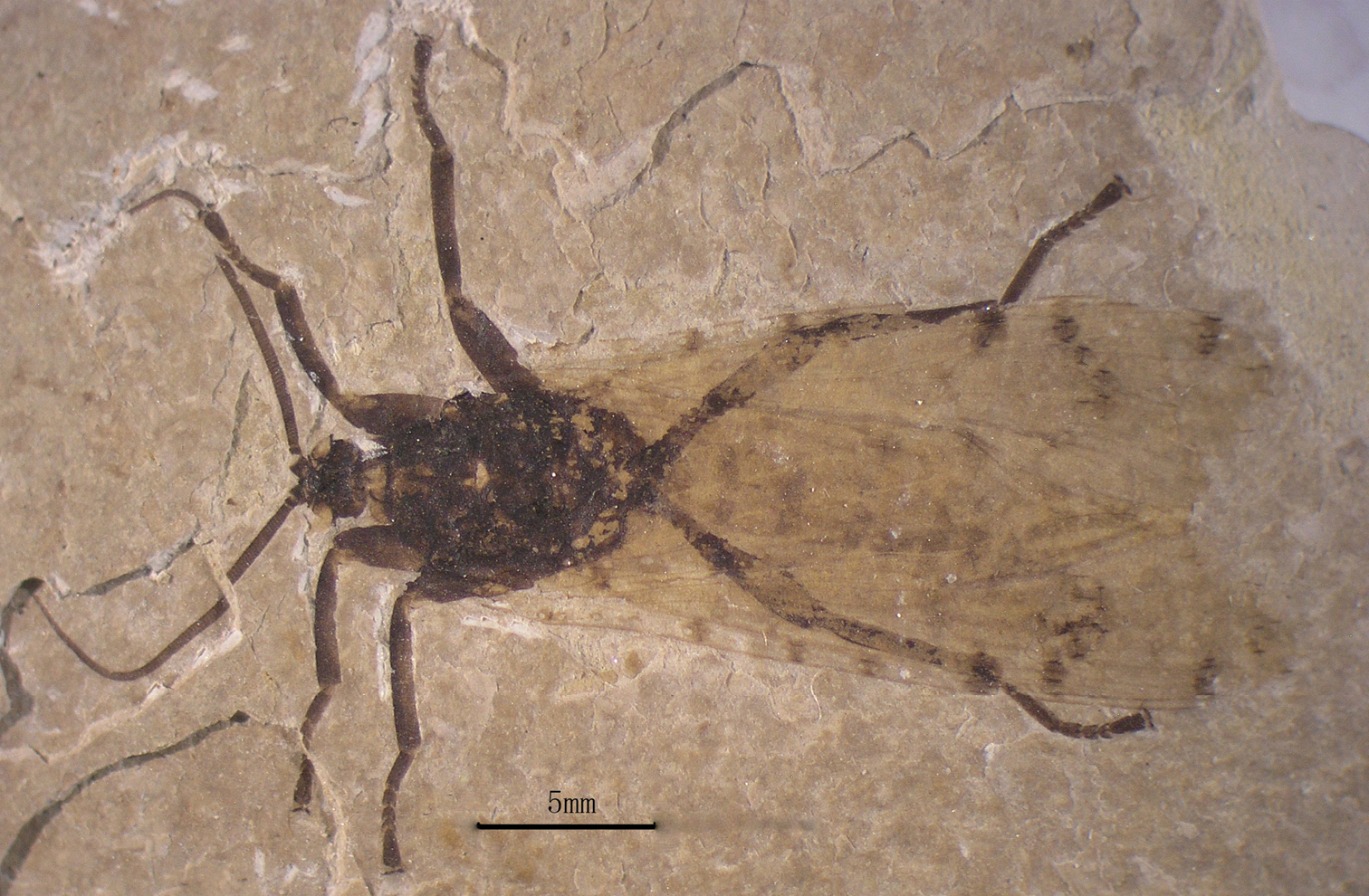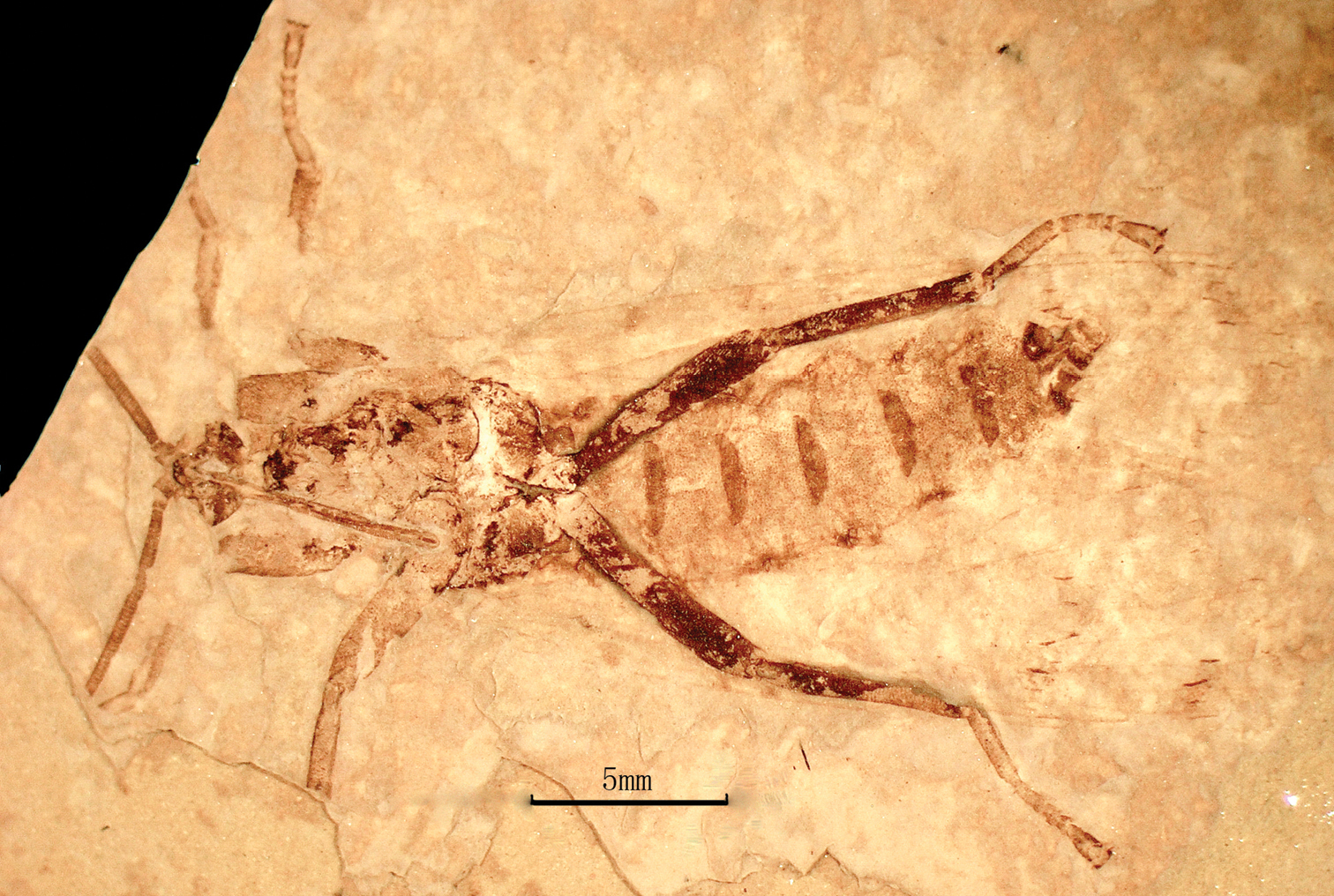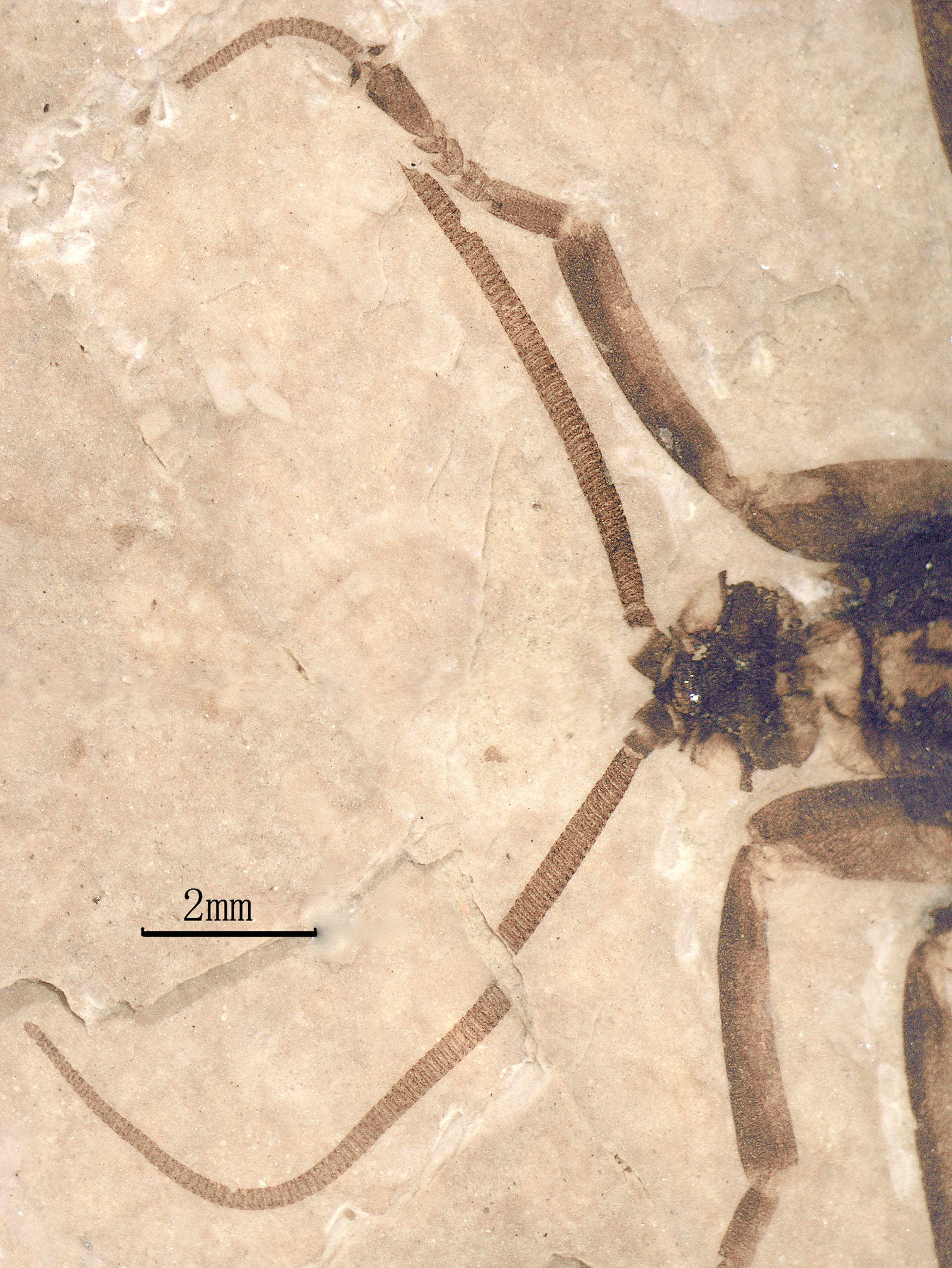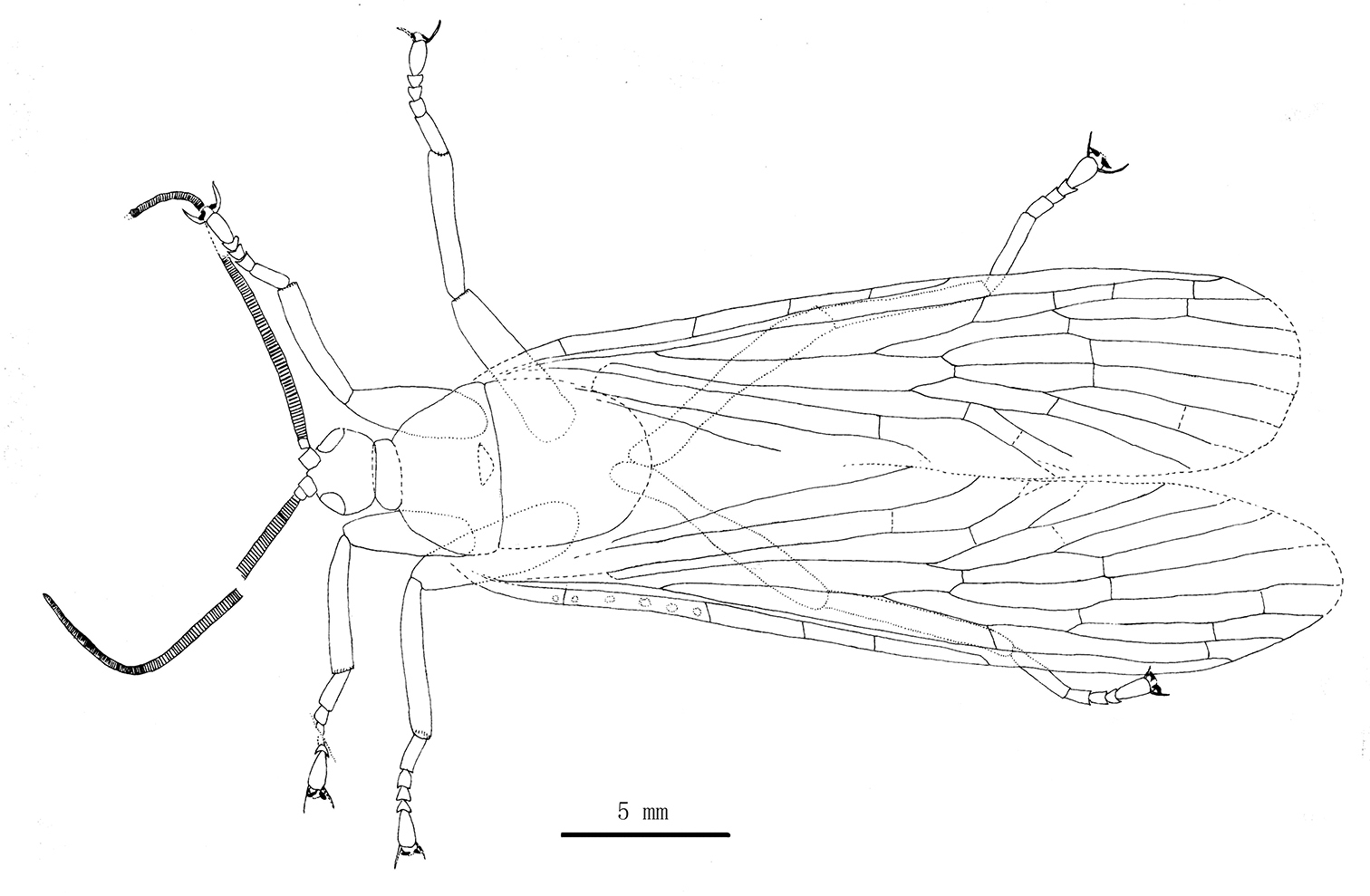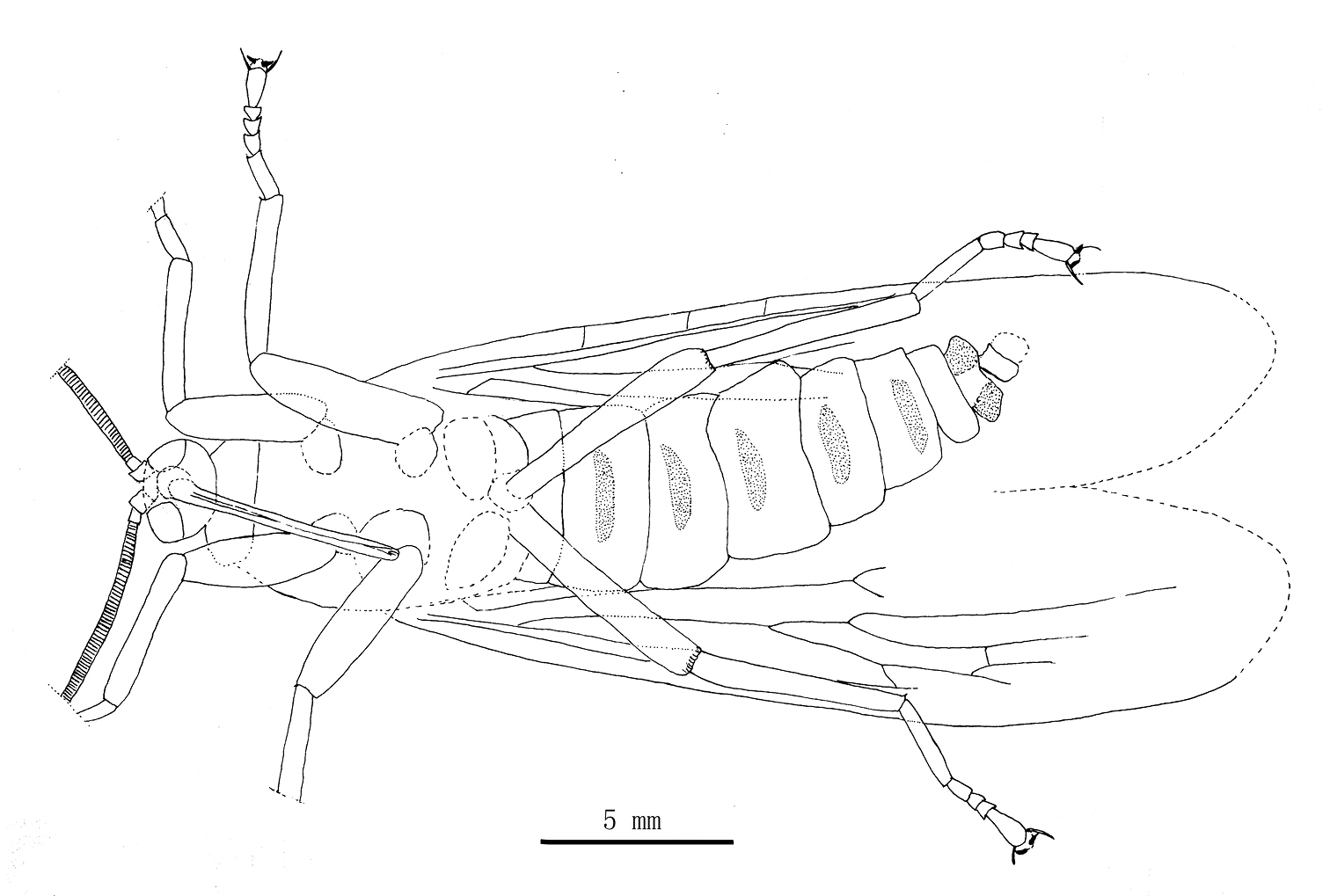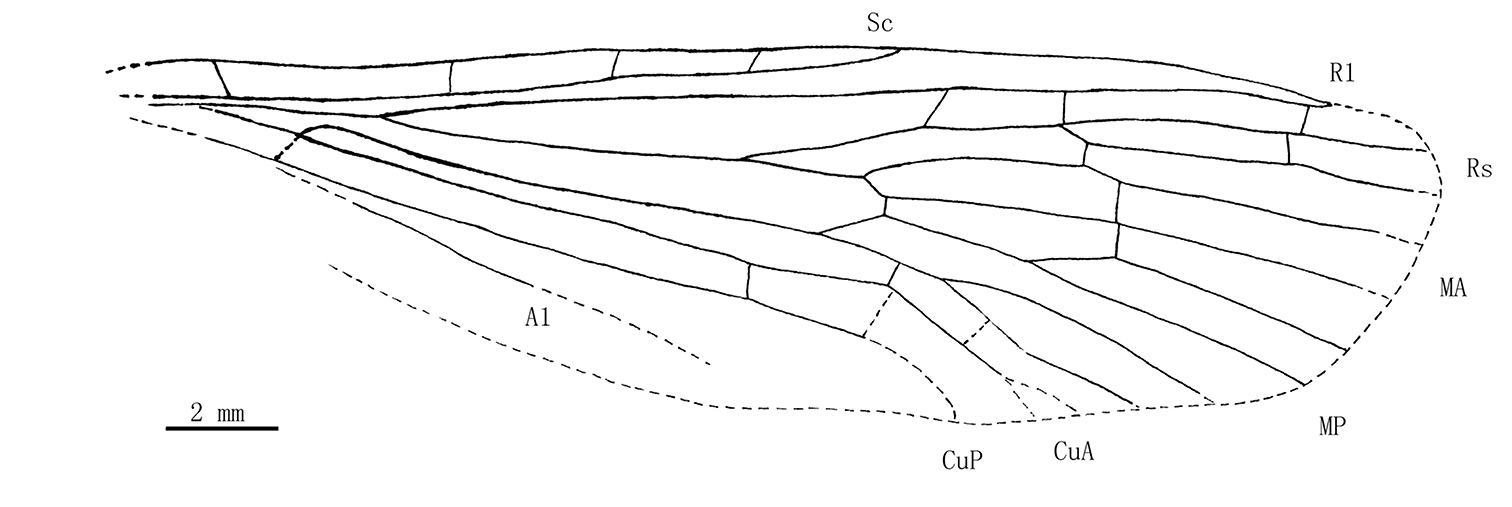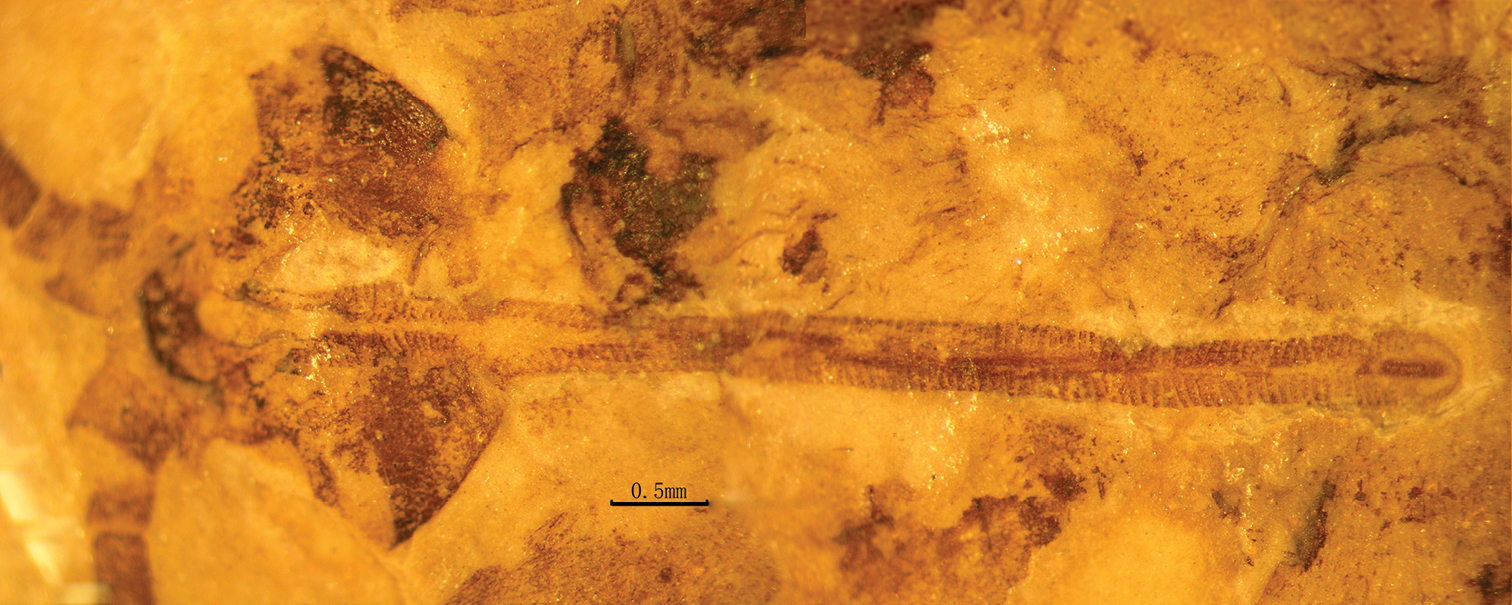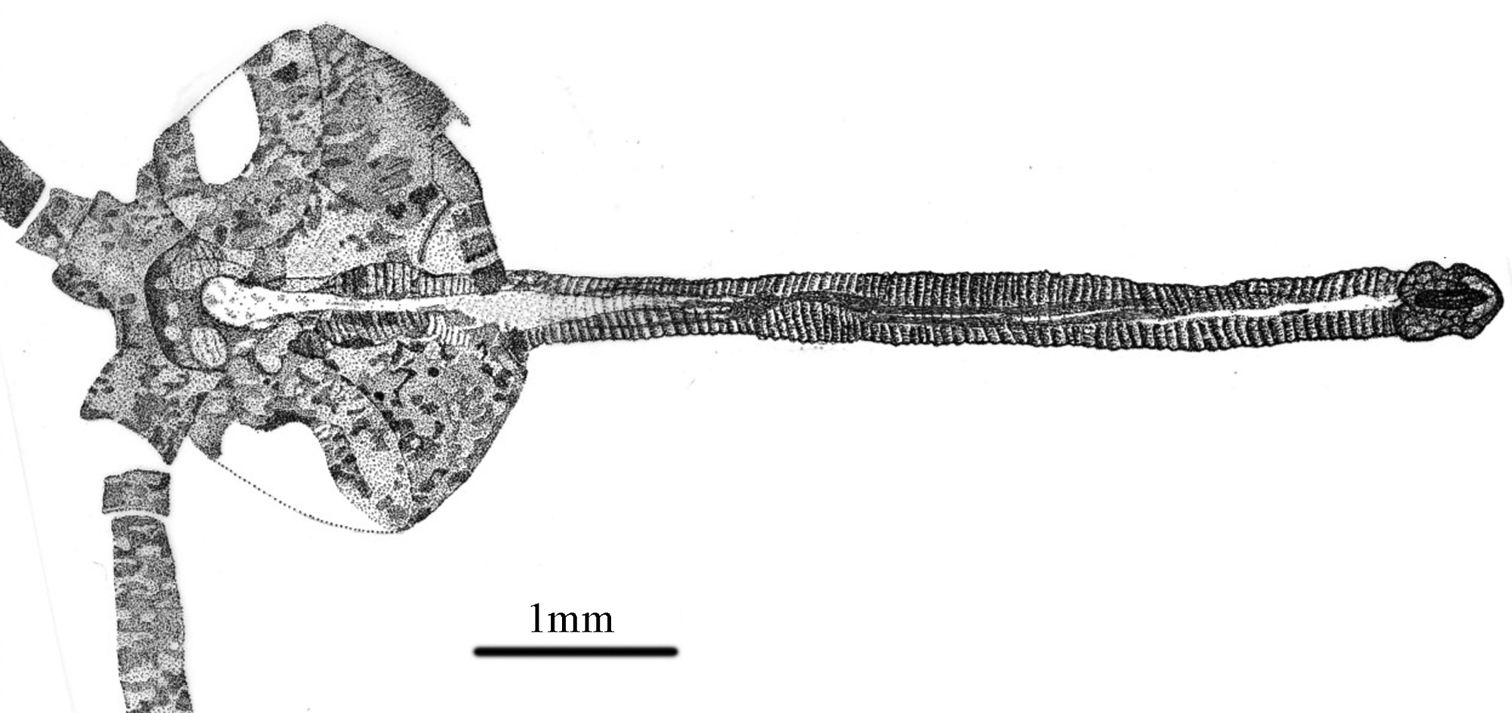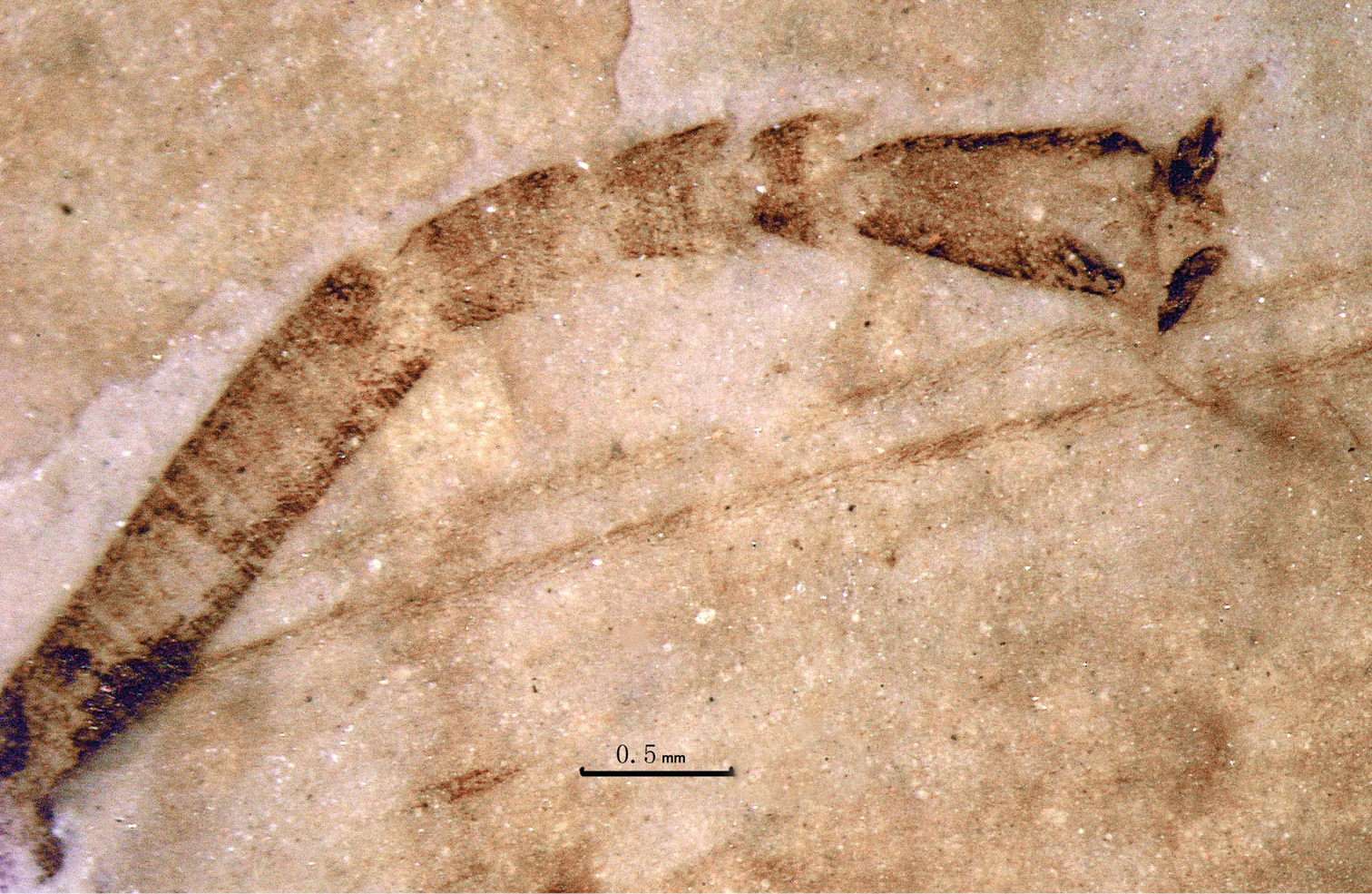(C) 2011 Dong Ren. This is an open access article distributed under the terms of the Creative Commons Attribution License, which permits unrestricted use, distribution, and reproduction in any medium, provided the original author and source are credited.
For reference, use of the paginated PDF or printed version of this article is recommended.
The Aneuretopsychidae is an unspeciose and enigmatic family of long-proboscid insects that presently consist of one known genus and three species from the Late Jurassic to Early Cretaceous of north-central Asia. In this paper, a new genus and species of fossil aneuretopsychid is described and illustrated, Jeholopsyche liaoningensis gen. et sp. n. Fossils representing this new taxon were collected from mid Early Cretaceous strata of the well known Jehol Biota in Liaoning Province, China. This finding documents the first formal record of fossil Aneuretopsychidae in China. In addition, this well-preserved and new material reveals previously unknown and detailed morphological structure of the mouthparts, antennae, head, thorax, legs and abdomen of this distinctive insect lineage.
Aneuretopsychidae, new genus, new species, proboscis, Yixian Formation, China, Early Cretaceous, pollination drops
The Aneuretopsychidae is a depauperate and enigmatic, extinct family of mid Mesozoic Mecoptera erected by
The Aneuretopsychidae, together with mid Mesozoic Mesopsychidae (
Recently, we collected two fossils of Aneuretopsychidae,
the first an excellently preserved part and counterpart, and a second
poorly-preserved specimen lacking a counterpart, both from the
well-known Yixian Formation. The Jehol Biota of the Yixian Formation has
yielded abundant fossil insects associated with seed plants, some of
which were potential pollen or nectar-feeders, such as members of the Orthoptera, Heteroptera, Coleoptera, Hymenoptera and Diptera (
The Early Cretaceous specimens were collected from the
Yixian Formation at Huangbanjigou Village, in Shangyuan Township, near
Beipiao City of Liaoning Province, China. There is general agreement
that the age of the Yixian Formation is of late Barremian age, based on
40Ar/39Ar date of 125 Ma on sanidine and biotite minerals (
This study is based on two fossil specimens housed in the fossil insect collection of the Key Laboratory of Insect Evolution & Environmental Changes, College of Life Sciences, Capital Normal University, Beijing, China (CNUB; Dong Ren, Curator). The specimens were examined using a Leica MZ12.5 dissecting microscope, and illustrated with the aid of a drawing tube and formatted through Adobe Photoshop CS2 software.
The wing venation nomenclature used in this paper is based on the interpretations and system proposed by Novokshonov (
Aneuretopsyche Rasnitsyn & Kozlov, 1990
Moderate-sized insects, mouthpart position most probably opisthognathous; hypognathous placement possible. Adults have a remarkably prolonged, siphonate proboscis, its exterior covered with well-developed dense hairs or microtrichia arranged in distinct annulae; terminus surrounded by a distinctive, lobed, fleshy pseudolabellum. Antennae distinctly longer than proboscis, multiarticulate; articles covered with annulate hairs. Forewing elongate. Sc with multiple branches. Both Rs and MA bifurcating; MP 4-branched. CuA single or probably bifurcating. Hindwing distinctly broader than forewing. Hairs on legs arranged in distinctive rings.
In addition to the type genus, Jeholopsyche gen. n.
Jeholopsyche liaoningensis sp. n.
The genus name is derived from the Jehol Biota; and psyche, from the Greek, meaning “soul” or “mind, ” a common suffix for delicately winged insects. Gender feminine.
In the forewing, Sc with three branches. R1 single. MP originates from stem of MP+CuA a little earlier (more basally) than Rs+MA from R. The Rs+MA bifurcation distinctly basad of the first bifurcation of MP. Both fore- and mid basitarsus shorter than remaining four segments in combined length. The basitarsus in hindlegs almost equal to remaining four segments in combined length.
Type species only.
In the general venation scheme, the Jeholopsyche gen. n. differs from Aneuretopsyche Rasnitsyn & Kozlov, 1990 by the Sc in the forewing having three branches, R1 single, and Rs+MA bifurcation distinctly basad of the first forking of MP.
urn:lsid:zoobank.org:act:4CEF36BC-0B9F-4E57-9E00-877367C5E9F1
http://species-id.net/wiki/Jeholopsyche_liaoningensis
Figs 1–9The specific name refers to Liaoning Province, which includes the site of the fossil’s discovery.
An almost complete male specimen with well-preserved body and wings, part and counterpart, specimen numbers CNU-M-LB-2005-002-1 and CNU-M-LB-2005-002-2. Forewing length (preserved part) at least 21.5 mm, width 6 mm; body length (excluding antennae and proboscis) minimally 23 mm; proboscis length 6.8 mm; antenna length (preserved part) minimally 10 mm.
A poorly-preserved specimen of unknown sex with body and wings, lateral view, specimen number CNU-M-LB-2005-001 (
Huangbanjigou Village, Shangyuan Township, Beipiao City, Liaoning Province, China. Yixian Formation, of Early Cretaceous (late Barremian) age.
Male: The specimen shows details of a nearly complete insect (Figs 1–5). A pair of forewings is almost symmetrically arranged, but hindwings are obscure.
Photo image of Jeholopsyche liaoningensis, gen. et sp. n. Holotype, specimen CNU-M-LB-2005-002-1, part.
Photo image of Jeholopsyche liaoningensis gen. et sp. n. Holotype, specimen CNU-M-LB-2005-002-2, counterpart.
Photo image of head and antennae of Jeholopsyche liaoningensis gen. et sp. n. Holotype, specimen CNU-M-LB-2005-002-1.
Line drawing of Jeholopsyche liaoningensis gen. et sp. n. Holotype in dorsal view, specimen CNU-M-LB2005-002-1.
Line drawing of Jeholopsyche liaoningensis gen. et sp. n. Holotype in ventral view, specimen CNU-M-LB-2005-002-2.
Head: Oviform in dorsal view, mouthparts opisthognathous or possibly hypognathous. Eyes large, widely separated. Between eyes, frons and clypeus well-developed. Proboscis ca. 6.8 mm long (proboscis length of paratype, 5.8 mm), straight, composed of indistinct labrum proximally and mostly labium, the latter with a distinct, fleshy pseudolabellum apically; mouth ellipsoidal and subterminally placed (Figs 7–8). Proboscis siphonate, stylets absent; covered with annulate dense hairs or microtrichia. Antennae distinctly longer than proboscis, flagellum multiarticulate, with annulate hairs.
Line drawing of forewing of Jeholopsyche liaoningensis gen. et sp. n. Holotype, specimen CNU-M-LB-2005-002-1.
Photo image of proboscis of Jeholopsyche liaoningensis gen. et sp. n. Holotype, specimen CNU-M-LB-2005-002-2.
Line drawing of proboscis of Jeholopsyche liaoningensis gen. et sp. n. Holotype, specimen CNU-M-LB-2005-002-2.
Thorax: Pronotum small; meso- and metanotum more or less similar to each other; both scutum and scutellum not discernible.
Legs: Coxae smaller than those in typical scorpionflies. The legs entirely covered with annulate pubescence. Tarsi 5-segmented. The fore- and midlegs short, almost equal to antennae in length; their basitarsus distinctly shorter than remaining four segments combined in length. The hindlegs somewhat longer and slender, almost equal to forewing in length, with at least 1 apical spur; the basitarsus longest, almost equal to remaining four segments combined in length. All pretarsi with a pair of distinct claws, each developing a reduced and thickened pulvillus (Fig. 9).
Photo image of hind tarsi of Jeholopsyche liaoningensis, gen. et sp. n. Holotype, specimen CNU-M-LB-2005-002-2.
Wings: Forewing slender (length/width ratio about 3.5:1); apical margin obscure, probably rounded; membrane delicate. A humeral vein present at the base of costal area. Sc long, reaching wing margin almost at same level as the MA bifurcation, with three inclined anterior branches; Sc area with some circular pale spots. Pterostigma probably absent. Both Rs and MA with two endings at or near the apical wing margin; Rs forking later than MA; MP forking later than where MA originates from Rs, with 4 long branches. Thyridium untraceable. Anal area broadened distinctly; A1 well developed. Forewing venational details is depicted in Fig. 6; hindwing untraceable.
Abdomen: elongate, tapering apically, with 9 visible segments. Basitergum (T1) small and closely associated with the metathorax; segments 2–6 distinctly longer. Segments 7–8 more slender than 2–6 (Figs 2, 5); segments 9–11 obscure but enlarged, indicating male sex. Cerci unknown.
Jeholopsyche liaoningensis is the first well-preserved member of the Aneuretopsychidae
that exhibits exquisite details of the body, including head and all
mouthpart elements, particularly the proboscis. Morphological details
of the siphonate proboscis, including setae arranged into annulae, a
fleshy pseudolabellum, and an ellipsoidal, subterminal mouth indicate
that these insects were fluid feeders on the secretions and exudates
from gymnospermous reproductive structures that also co-occur in Yixian
deposits. From the proboscis structure and inferred ecological
relationships, we conclude that Jeholopsyche liaoningensis was a pollinator of gymnosperm hosts that bore deep funnel or other tubular structures laden with nectar-like fluid rewards (
We thank Dr. Alexandr Rasnitsyn for his contribution to the study of long-proboscid scorpionflies in Ren et al. (2009), and his preparation of the mouthparts of the Holotype CNU-M-LB-2005-002-2. We appreciate valuable comments and suggestion from Dr. Dmitry Shcherbakov and two anonymous reviewers. This work was supported by the National Natural Science Foundation of China (Grants 30430100 and 40872022), Nature Science Foundation of Beijing (Grant 5082002), and the Scientific Research Key Program and PHR Project of Beijing Municipal Commission of Education. This is contribution 151 of the Evolution of Terrestrial Ecosystems Consortium at the National Museum of Natural History, in Washington, D.C.







